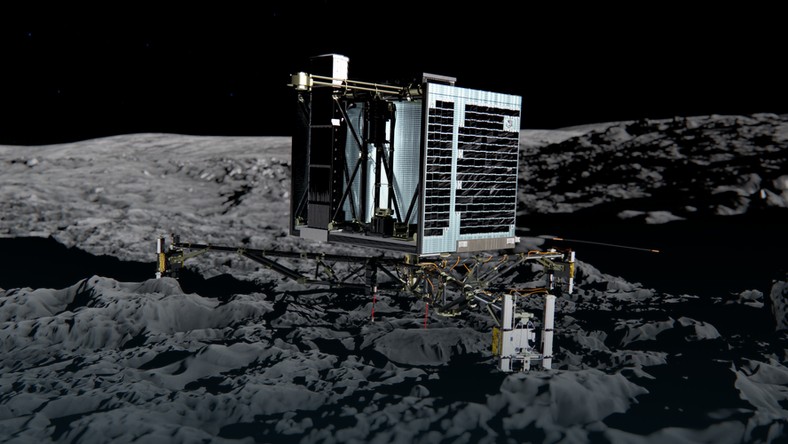
Photo: MEDIALIAB / AFP
Philae lander on the comet discovered carbon atoms
The researchers are currently conducting research to demonstrate whether on a comet are complex compounds. One of the research instruments detected carbon-containing molecules, but for now it is not clear whether they are organic molecules so complex that they can be part of the protein, ie chemical compounds necessary for life.
– The study will help us understand whether organic particles were brought to earth by comets – found in “Wall Street Journal” Stephan Ulamec the European Space Agency.
The lander, which is powered by solar energy, received light for 1.5 hours per day instead of seven hours and For this reason, as announced European Space Agency, now went into hibernation.
Rosetta Mission leads the European Agency for (ESA). Although previously missions to comets, it is – as recalled by Charles Wojcicki from the Copernicus Science Centre – has never failed to put on the surface of the comet and the test equipment to conduct research there.
Its share in the Rosetta mission are also Poles. Together with the lander on the comet’s surface, there will also be MUPUS instrument developed by researchers from the Centre for Space Research.
After landing on a comet has a knock on its surface and, among others, investigate the temperature. The movie popularizing knowledge of the Rosetta mission, on behalf of ESA, completed Tomek Baginski, director of animated films, including the Oscar-nominated “Cathedral”.
Rosetta probe its mission began in 2004. Then fired it into space. With hibernation wybudzono it in January. after 957 days of traveling in the direction of the comet. From that moment already done a lot of tasks. How informed the ESA, the two first images of the comet Churyumov-Gerasimenko poll done in March.
In mid-October photographed group of rocks on the surface of the comet, and the largest of them was called “Cheops”. With the probe, the researchers found, too, that the comet releases water into space at a rate equal to two glasses of a second.
(in)
No comments:
Post a Comment